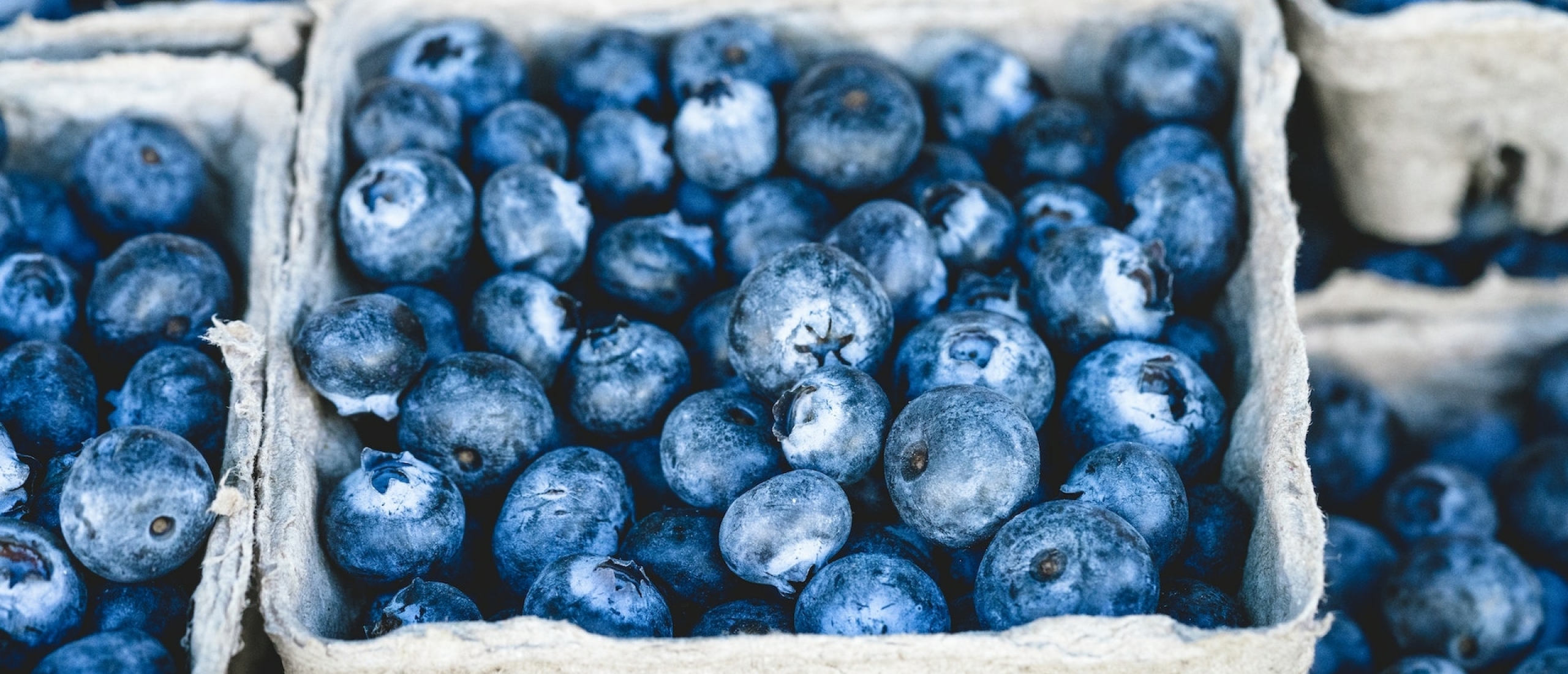Introduction to Blueberries
What are blueberries?
Blueberries are small, round fruits that are typically blue or purple in color. They are a type of berry that grows on shrubs and are native to North America. Blueberries are known for their sweet and tangy flavor, making them a popular ingredient in various dishes and desserts. They are also packed with nutrients and antioxidants, making them a healthy choice for snacking. Blueberries can be enjoyed fresh, frozen, or dried, and are often used in smoothies, jams, pies, and muffins. With their vibrant color and delicious taste, blueberries are a versatile and nutritious fruit that can be enjoyed in many different ways.
History of blueberries
Blueberries have a rich and fascinating history that dates back thousands of years. Native to North America, blueberries were a staple food for many Indigenous tribes who used them for both culinary and medicinal purposes. The early European settlers learned about blueberries from the Native Americans and quickly incorporated them into their diets. In the 19th century, blueberries started gaining popularity as a cultivated crop, with the first commercial blueberry farm established in the early 1900s. Since then, blueberries have become one of the most beloved and widely consumed fruits worldwide, known for their sweet and tangy flavor, as well as their numerous health benefits.
Nutritional benefits of blueberries
Blueberries are not only delicious but also packed with numerous nutritional benefits. They are low in calories and high in fiber, making them a great choice for those looking to maintain a healthy weight. Blueberries are also rich in antioxidants, which help protect the body against damage from harmful free radicals. Additionally, they are a good source of vitamins C and K, as well as manganese. These vitamins and minerals contribute to a strong immune system, healthy bones, and improved brain function. Including blueberries in your diet can provide a range of health benefits and contribute to overall well-being.
Common Varieties of Blueberries
Highbush blueberries
Highbush blueberries are one of the most common varieties of blueberries. They are known for their large size and sweet flavor. Highbush blueberries are typically grown in North America and are popular for both fresh consumption and for use in various culinary applications. These blueberries are versatile and can be used in a wide range of dishes, including pies, muffins, and smoothies. They are also rich in antioxidants and other beneficial nutrients, making them a healthy choice. Highbush blueberries are usually harvested in the summer months and can be found in grocery stores and farmers markets during this time. Overall, highbush blueberries are a delicious and nutritious fruit that can be enjoyed in many different ways.
Lowbush blueberries
Lowbush blueberries, also known as wild blueberries, are a small variety of blueberries that grow naturally in North America. These blueberries are typically found in regions with cooler climates, such as Maine and Canada. Lowbush blueberries have a unique flavor that is often described as more intense and tangy compared to other varieties. They are also known for their smaller size and darker color. Lowbush blueberries are often used in baking, jams, and preserves due to their rich flavor. Additionally, they are packed with antioxidants and other beneficial nutrients, making them a healthy choice for snacking or incorporating into various recipes.
Rabbiteye blueberries
Rabbiteye blueberries, also known as Vaccinium ashei, are a popular variety of blueberries that are native to the southeastern United States. These blueberries get their name from the pinkish hue of their unripe fruit, which resembles the eye of a rabbit. Rabbiteye blueberries are known for their sweet and tangy flavor, making them a favorite among blueberry enthusiasts. They are typically larger in size compared to other blueberry varieties and have a firm texture. Rabbiteye blueberries are rich in antioxidants and are a great source of vitamins C and K. They are versatile and can be enjoyed fresh, added to smoothies, baked into pies, or used in jams and jellies. If you're looking to grow your own blueberries, Rabbiteye blueberries are a great choice as they are relatively easy to cultivate and are well-suited for the warm climates of the southeastern region.
Unique Varieties of Blueberries
Wild blueberries
Wild blueberries, also known as lowbush blueberries, are a smaller variety of blueberries that grow naturally in the wild. They are typically found in regions with cooler climates, such as North America and Europe. Wild blueberries have a more intense flavor compared to cultivated blueberries, with a perfect balance of sweetness and tartness. These berries are known for their deep blue color and are packed with antioxidants, vitamins, and minerals. Due to their smaller size, wild blueberries are often used in baking, jams, and sauces. They are also a popular choice for adding a burst of flavor to salads, smoothies, and desserts. Whether enjoyed fresh or incorporated into various recipes, wild blueberries offer a unique and delicious taste that is sure to satisfy any blueberry lover.
Half-high blueberries
Half-high blueberries are a unique variety of blueberries that are a cross between highbush and lowbush blueberries. They typically grow to be about 2-4 feet tall, making them a great option for smaller gardens or containers. Half-high blueberries produce medium-sized berries that have a sweet and tangy flavor. They are known for their cold hardiness, making them suitable for colder climates. These blueberries require full sun and well-drained soil to thrive. Half-high blueberries are a popular choice among home gardeners due to their compact size and delicious fruit.
Southern highbush blueberries
Southern highbush blueberries are a popular variety of blueberries that thrive in the southern regions of the United States. These blueberries are known for their large size and sweet flavor. They are typically harvested from late spring to early summer and are a favorite among both home gardeners and commercial growers. Southern highbush blueberries require a certain amount of chill hours to produce a bountiful harvest, making them well-suited for the mild winters of the southern states. They are also more tolerant of heat and humidity compared to other blueberry varieties. With their delicious taste and adaptability to the southern climate, Southern highbush blueberries are a fantastic choice for anyone looking to grow blueberries in the southern regions.
Growing Blueberries at Home
Choosing the right variety for your climate
When choosing the right variety of blueberries for your climate, it is important to consider the specific requirements of each variety. Some blueberry varieties are better suited for colder climates, while others thrive in warmer regions. For colder climates, it is recommended to choose varieties that are cold-hardy and can withstand freezing temperatures. These varieties often have a shorter growing season and can tolerate frost. On the other hand, for warmer climates, it is advisable to select varieties that are heat-tolerant and can withstand high temperatures. These varieties typically have a longer growing season and can handle intense sunlight. By understanding the climate requirements of different blueberry varieties, you can ensure that you choose the right one that will thrive in your specific climate and provide you with a bountiful harvest.
Planting and caring for blueberry bushes
When planting blueberry bushes, it is important to choose a suitable location that receives full sun for at least six hours a day. Blueberries prefer acidic soil with a pH level between 4.5 and 5.5, so it is recommended to test the soil and amend it if necessary. Before planting, dig a hole that is twice as wide and just as deep as the root ball of the blueberry bush. Gently remove the plant from its container and place it in the hole, making sure the top of the root ball is level with the ground. Backfill the hole with a mixture of peat moss and soil, and water thoroughly. Blueberry bushes require regular watering, especially during dry periods, to keep the soil consistently moist. Mulching around the base of the plants can help retain moisture and suppress weed growth. Additionally, pruning should be done in late winter or early spring to remove any dead or damaged branches and to promote new growth. With proper planting and care, blueberry bushes can thrive and provide a bountiful harvest of delicious berries.
Harvesting and preserving blueberries
Harvesting and preserving blueberries is an essential step to ensure their freshness and availability throughout the year. Blueberries are typically harvested when they are fully ripe, which is indicated by their deep blue color and a slight softness to the touch. To harvest blueberries, farmers carefully handpick the berries, being cautious not to damage the delicate fruit. Once harvested, blueberries can be preserved in various ways, such as freezing or canning. Freezing blueberries is a popular method as it helps retain their nutritional value and flavor. To freeze blueberries, they should be washed, dried thoroughly, and then placed in a single layer on a baking sheet before transferring them to a freezer-safe container. Canning blueberries involves cooking them in a sugar syrup and sealing them in jars for long-term storage. Regardless of the preservation method chosen, properly harvested and preserved blueberries can be enjoyed in a variety of dishes, including smoothies, pies, and jams.
Culinary Uses of Blueberries
Blueberry desserts and baked goods
Blueberry desserts and baked goods are a delightful way to enjoy the sweet and tangy flavors of blueberries. From classic blueberry pies and cobblers to decadent blueberry cheesecakes and muffins, there is a wide range of options to satisfy any sweet tooth. Blueberries can be incorporated into various desserts, such as blueberry crumbles, tarts, and even ice creams. Their vibrant color and burst of flavor make them a perfect addition to cakes, pancakes, and scones as well. Whether you prefer a warm blueberry crisp or a refreshing blueberry sorbet, these desserts and baked goods are sure to impress and leave you craving for more.
Blueberry sauces and toppings
Blueberry sauces and toppings are a delicious way to enhance the flavor and presentation of various dishes. Whether you're looking to add a burst of sweetness to your pancakes, waffles, or ice cream, or want to create a tangy glaze for your grilled meats or roasted vegetables, blueberry sauces and toppings are the perfect choice. Made from fresh or frozen blueberries, these sauces can be easily prepared by simmering the berries with sugar and a splash of lemon juice until they thicken into a luscious syrup. For added texture and complexity, you can also incorporate other ingredients like cinnamon, vanilla extract, or even a hint of balsamic vinegar. The versatility of blueberry sauces and toppings makes them a versatile condiment that can be enjoyed in both sweet and savory dishes, adding a delightful burst of flavor and a vibrant pop of color.
Blueberry-infused beverages
Blueberry-infused beverages have become increasingly popular in recent years. From blueberry smoothies to blueberry-infused water, there are a variety of options to choose from. These beverages not only provide a refreshing and flavorful alternative to traditional drinks, but they also offer numerous health benefits. Blueberries are packed with antioxidants, vitamins, and minerals, making them a nutritious addition to any beverage. Whether you're looking for a tasty way to stay hydrated or want to boost your immune system, blueberry-infused beverages are a delicious and beneficial choice.
Blueberries in Health and Wellness
Blueberries as a superfood
Blueberries are often referred to as a superfood due to their numerous health benefits. Packed with antioxidants, vitamins, and minerals, blueberries have been shown to improve brain function, boost heart health, and support a healthy immune system. These tiny berries are also low in calories and high in fiber, making them a great choice for weight management. Additionally, blueberries have anti-inflammatory properties, which can help reduce the risk of chronic diseases such as cancer and diabetes. Incorporating blueberries into your diet can provide a delicious and nutritious way to enhance your overall well-being.
Blueberries for brain health
Blueberries have long been recognized for their potential benefits to brain health. They are rich in antioxidants, which help protect the brain from oxidative stress and inflammation. Additionally, blueberries contain flavonoids, which have been shown to improve memory and cognitive function. Research suggests that regularly consuming blueberries may help delay age-related cognitive decline and improve overall brain function. Including blueberries in your diet is a delicious and nutritious way to support brain health.
Blueberries in skincare products
Blueberries are not only delicious and nutritious to eat, but they also offer numerous benefits when used in skincare products. Due to their high antioxidant content, blueberries can help protect the skin from damage caused by free radicals, which can lead to premature aging. Additionally, blueberries are rich in vitamins A and C, which are essential for maintaining healthy skin. These vitamins can help promote collagen production, improve skin elasticity, and brighten the complexion. Blueberries also have anti-inflammatory properties, making them ideal for soothing and calming irritated skin. Whether used in face masks, serums, or creams, incorporating blueberries into skincare products can help nourish and rejuvenate the skin, leaving it looking radiant and youthful.



